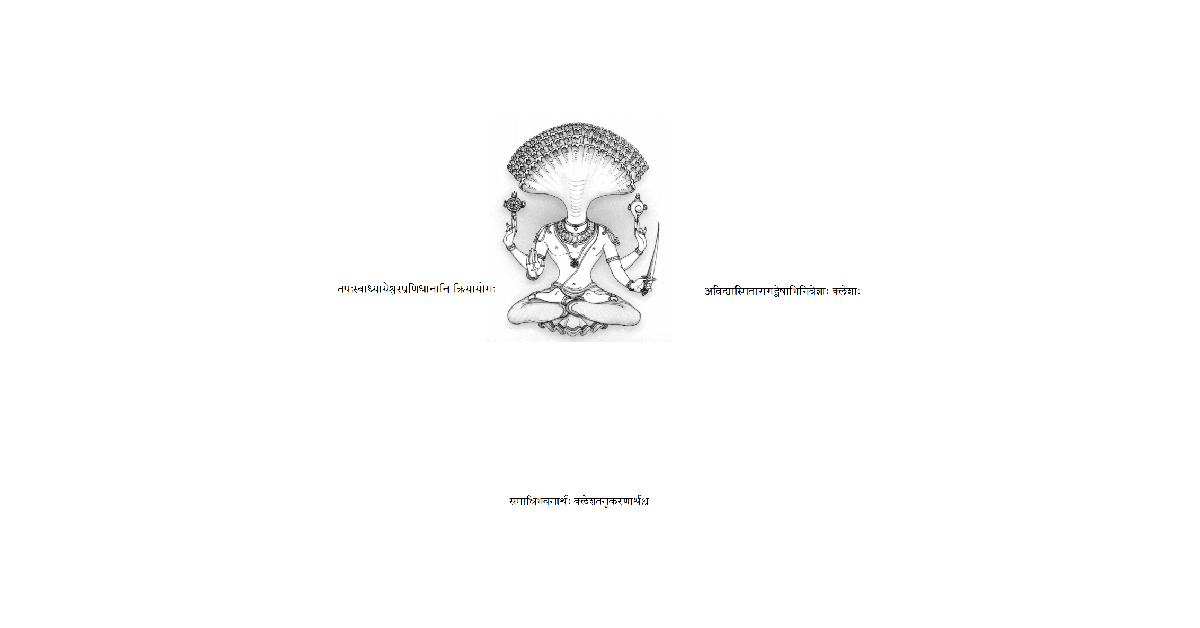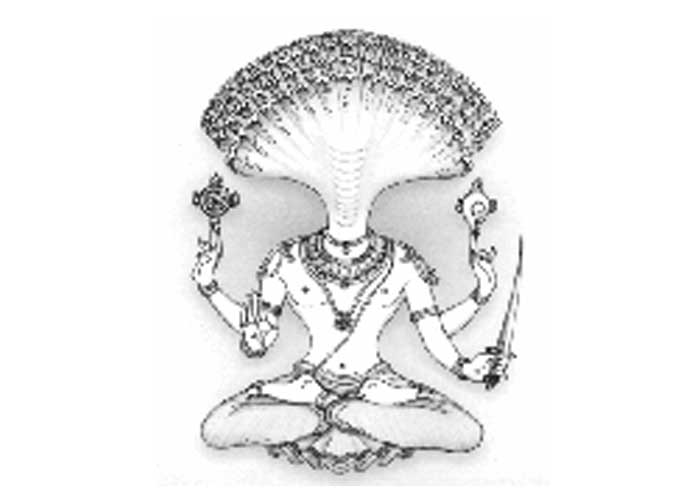2.1
Tapah svadhyay-eshvarpranidhaanaani kriyayogah
Tapah: Penance
Svadhyay: Self-study
Ishvar Pranidhaan: Surrender to Divine
Kriya: Action/practice
Yogah: Yog
Tapa, Svadhyay and Ishvar Pranidhaan comprise Kriya Yog.
Tapa translates as heating the body by enduring as much pain as comes one’s way in the process of carrying out his/her dharma according to one’s capacity, ability, stage of life and circumstances. Fasting too is a form of tapa.
Svadhyay translates as self-study and includes regular practice of the kriya, dhyan, jaap as given by Guru as well as dwelling upon one’s weaknesses and shortcomings and constantly working towards self-improvement.
Ishvar Pranidhaan translates as surrender or submission to Divine Will. To walk the path with complete detachment to the pain and pleasure that comes in the way.4
2.2
Patanjali describes the purpose of aforementioned Kriya Yog,
Samaadhibhaavnaarthah Kleshtanukaranaarthashcha
Samaadhi: Samaadhi
Bhaavnaarthah: For siddhi of
Klesh: Cause of suffering
Tanukaranaarthah: For elimination of
Cha: And
(This Kriya Yog) is for realization of samaadhi and for removal of the cause of suffering.
Walking the path of kriya yoga under guidance of a Guru, by constantly working to increase one’s capacity by enduring as much pain, following the niyam of sadhna and self-improvement and being completely devoted to the Divine force, helps in realization of the state of samaadhi and in removal of the causes of suffering that keep one engaged in the physical or gross.
2.3
Patanjali lists the five causes of suffering,
Avidya: Falsehood
Asmita: Ego
Raag: Attachment to pleasure
Dvesh: Aversion from pain
Abhinivesh: Fear of death
Kleshah: Causes of suffering
Avidya, asmita, raag, dvesh and abhinivesh are the five kleshas.
Avidya is the falsehood because of which a being takes the unreal to be real and gets caught up in the cycle of pleasure and pain associated with temporariness of the physical world.
Asmita is the false notion of identifying oneself as the ego or the buddhi, which are nothing but the five elements and their modifications. In the absence of gyan of self, one relies on the buddhi which is limited.
Raag is the attachment to pleasure. Caught up in avidya, one takes the physical world to be real – job, relationships, social status, money, property etc. and is constantly seeking to better the physical. Since the physical is temporary and bound to perish, the pain it brings is directly proportional to the pleasure it gave.
Dvesh is the aversion to pain. Pleasure and pain are the two faces of a coin, they go hand in hand. While we ask for pleasures, hardly anyone asks for pain. Pain, in fact, helps one cancel out the backlog of karmas and transcend the physical. It is aversion to pain that keeps one suffering.
Abhinivesh is the fear of the death. Even the greatest minds are not free from this fear. Attachment to body, which is constantly deteriorating and certain to perish, is a cause of suffering at all times





